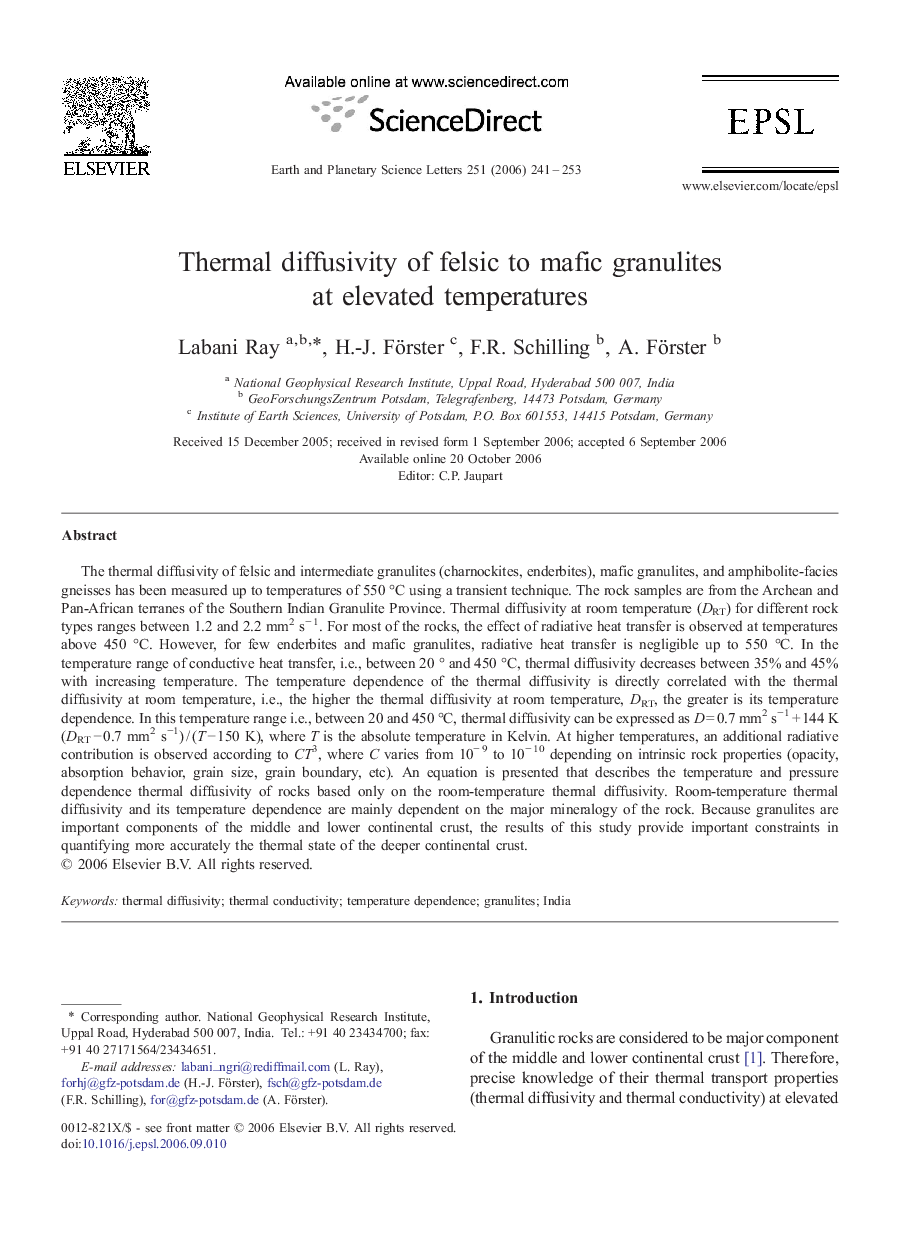| Article ID | Journal | Published Year | Pages | File Type |
|---|---|---|---|---|
| 4680863 | Earth and Planetary Science Letters | 2006 | 13 Pages |
The thermal diffusivity of felsic and intermediate granulites (charnockites, enderbites), mafic granulites, and amphibolite-facies gneisses has been measured up to temperatures of 550 °C using a transient technique. The rock samples are from the Archean and Pan-African terranes of the Southern Indian Granulite Province. Thermal diffusivity at room temperature (DRT) for different rock types ranges between 1.2 and 2.2 mm2 s− 1. For most of the rocks, the effect of radiative heat transfer is observed at temperatures above 450 °C. However, for few enderbites and mafic granulites, radiative heat transfer is negligible up to 550 °C. In the temperature range of conductive heat transfer, i.e., between 20 ° and 450 °C, thermal diffusivity decreases between 35% and 45% with increasing temperature. The temperature dependence of the thermal diffusivity is directly correlated with the thermal diffusivity at room temperature, i.e., the higher the thermal diffusivity at room temperature, DRT, the greater is its temperature dependence. In this temperature range i.e., between 20 and 450 °C, thermal diffusivity can be expressed as D = 0.7 mm2 s−1 + 144 K (DRT − 0.7 mm2 s−1) / (T − 150 K), where T is the absolute temperature in Kelvin. At higher temperatures, an additional radiative contribution is observed according to CT3, where C varies from 10− 9 to 10− 10 depending on intrinsic rock properties (opacity, absorption behavior, grain size, grain boundary, etc). An equation is presented that describes the temperature and pressure dependence thermal diffusivity of rocks based only on the room-temperature thermal diffusivity. Room-temperature thermal diffusivity and its temperature dependence are mainly dependent on the major mineralogy of the rock. Because granulites are important components of the middle and lower continental crust, the results of this study provide important constraints in quantifying more accurately the thermal state of the deeper continental crust.
